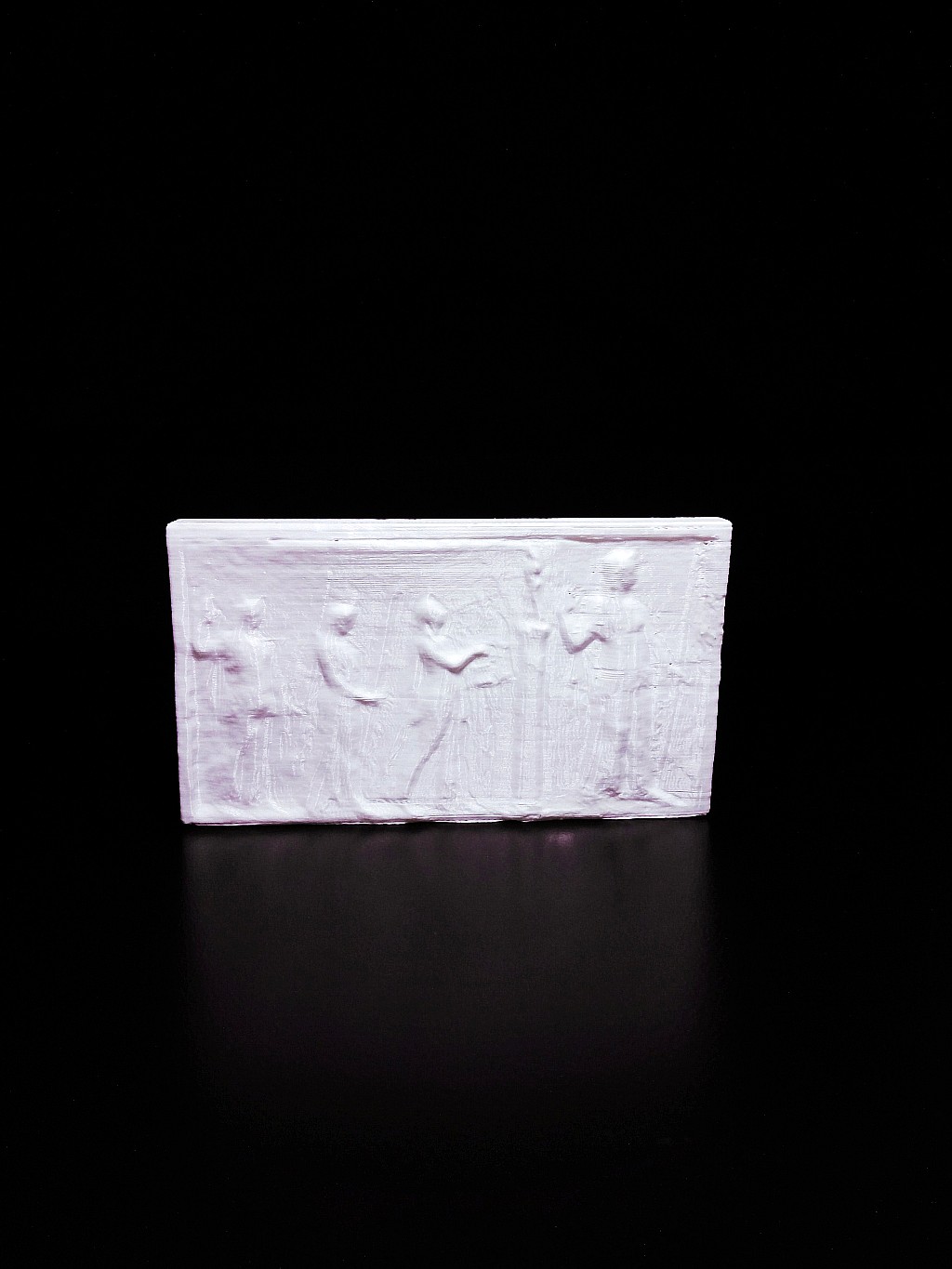
Apollo Citharoedus Artemis, and Latona
myminifactory
Who is depicted? Apollo stands out as one of the most significant and multifaceted Olympian deities in classical Greek and Roman religion and mythology. This iconic figure embodies the ideal of the kouros (a beardless, athletic youth), representing a god of music, truth and prophecy, healing, the sun and light, plague, poetry, and many other aspects. As the son of Zeus and Leto, Apollo has a twin sister, Artemis, who is revered as the chaste huntress. In Greek-influenced Etruscan mythology, Apollo is known as Apulu. Technical/Specification about the statue Relief sculpture involves creating three-dimensional elements that remain attached to a solid background of the same material. This technique originated from the Latin verb relevo, which means "to raise." When crafting a relief, artists give the impression that the sculpted material has been raised above the background plane by lowering the field and leaving the unsculpted parts seemingly raised. This process requires considerable chiselling away of the background, making it a time-consuming exercise. However, relief sculpture offers several advantages over three-dimensional sculptures, including saving time on forming the rear of a subject and being less fragile and more securely fixed than a sculpture in the round. In materials such as metal, clay, plaster stucco, ceramics or papier-mâché, the form can be added to or raised up from the background, resulting in monumental bronze reliefs made by casting. There are various degrees of relief depending on the degree of projection of the sculpted form from the field. The range includes high relief (alto-rilievo), where more than 50% of the depth is shown and there may be undercut areas; mid-relief (mezzo-rilievo); low-relief (basso-rilievo, or French: bas-relief /ˌbɑːrɪˈliːf/), where the plane is only slightly lower than the sculpted elements; and shallow-relief or rilievo schiacciato. Sunk relief, which was mainly restricted to Ancient Egypt, is another term used to describe this technique. However, the distinction between high relief and low relief is the clearest and most important, and these two terms are generally used to discuss most work. The definition of these terms can be somewhat variable, and many works combine areas in more than one category, sometimes sliding between them in a single figure; accordingly, some writers prefer to avoid all distinctions. The opposite of relief sculpture is counter-relief, intaglio, or cavo-rilievo, where the form is cut into the field or background rather than rising from it; this is very rare in monumental sculpture.
With this file you will be able to print Apollo Citharoedus Artemis, and Latona with your 3D printer. Click on the button and save the file on your computer to work, edit or customize your design. You can also find more 3D designs for printers on Apollo Citharoedus Artemis, and Latona.
